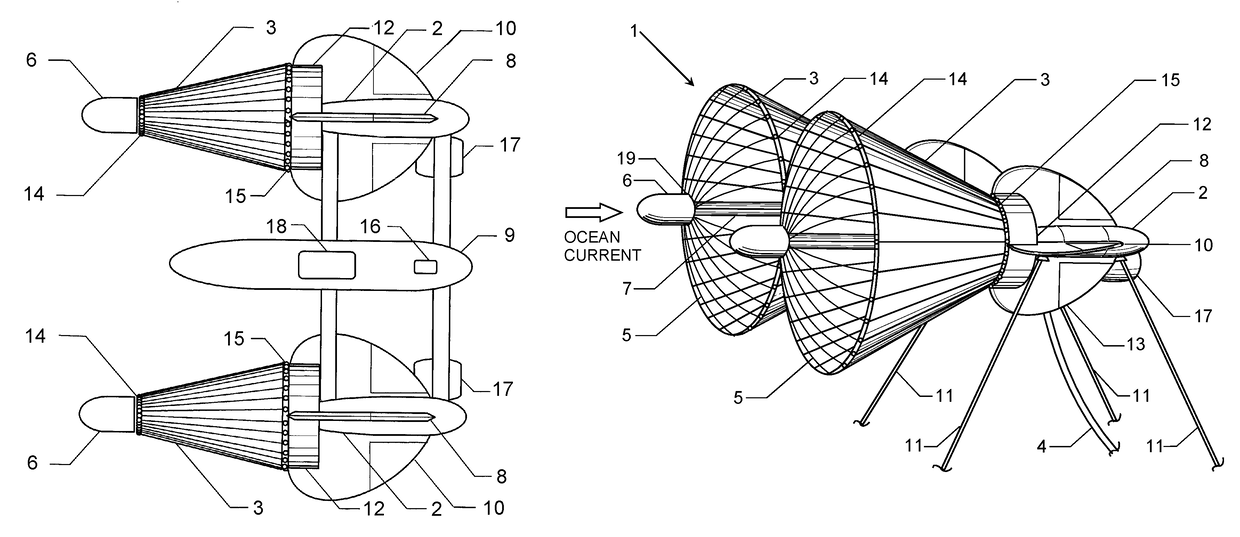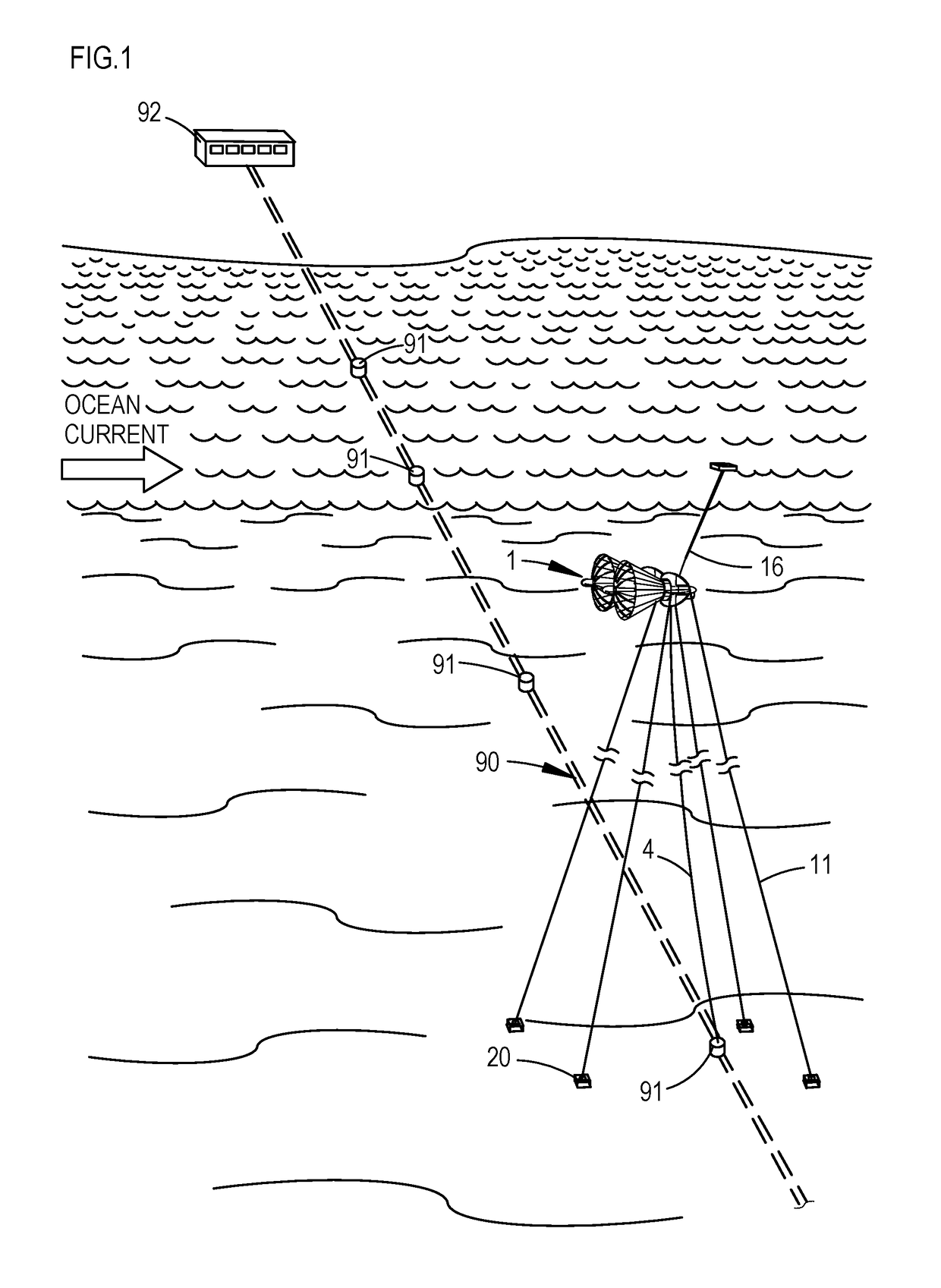Self-positioning robotic subsea power generation system
a robotic subsea power generation and self-positioning technology, applied in the direction of electric generator control, sustainable manufacturing/processing, final product manufacturing, etc., can solve the problems of environmental issues and safety problems, high cost of power, and hazard to marine water fowl and surface traffic, so as to increase the velocity of the exiting current
- Summary
- Abstract
- Description
- Claims
- Application Information
AI Technical Summary
Benefits of technology
Problems solved by technology
Method used
Image
Examples
example application
[0075
[0076]As an example potential application area of the amount of power that could be produced from the present invention, the Florida Straits is an eastern offshore Florida region that is axially oriented north-south and contains some of the world's fastest marine currents and are relatively close to shore. These currents carry virtually all of the Gulf of Mexico water mass through the narrow straits area and north to the New England regions and beyond. Other significant world wide areas include the Kuroshio, offshore eastern Japan and Agulhas Current, offshore eastern Africa. This example application also demonstrates the increase in current velocity and corresponding power increase resulting from the use of the Bernoulli Principle.
[0077]The Florida Straits have been the subject of a number of oceanic studies owing to the significant potential of power that might be converted from hydrodynamic energy carried by the currents that may be subject to meandering. This power could be...
PUM
 Login to View More
Login to View More Abstract
Description
Claims
Application Information
 Login to View More
Login to View More - R&D
- Intellectual Property
- Life Sciences
- Materials
- Tech Scout
- Unparalleled Data Quality
- Higher Quality Content
- 60% Fewer Hallucinations
Browse by: Latest US Patents, China's latest patents, Technical Efficacy Thesaurus, Application Domain, Technology Topic, Popular Technical Reports.
© 2025 PatSnap. All rights reserved.Legal|Privacy policy|Modern Slavery Act Transparency Statement|Sitemap|About US| Contact US: help@patsnap.com



